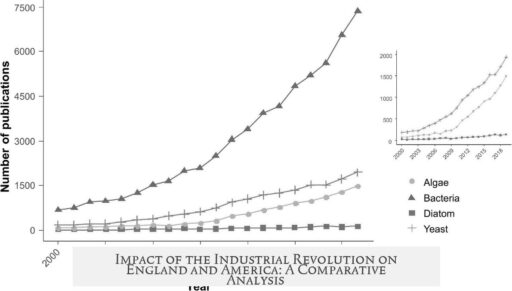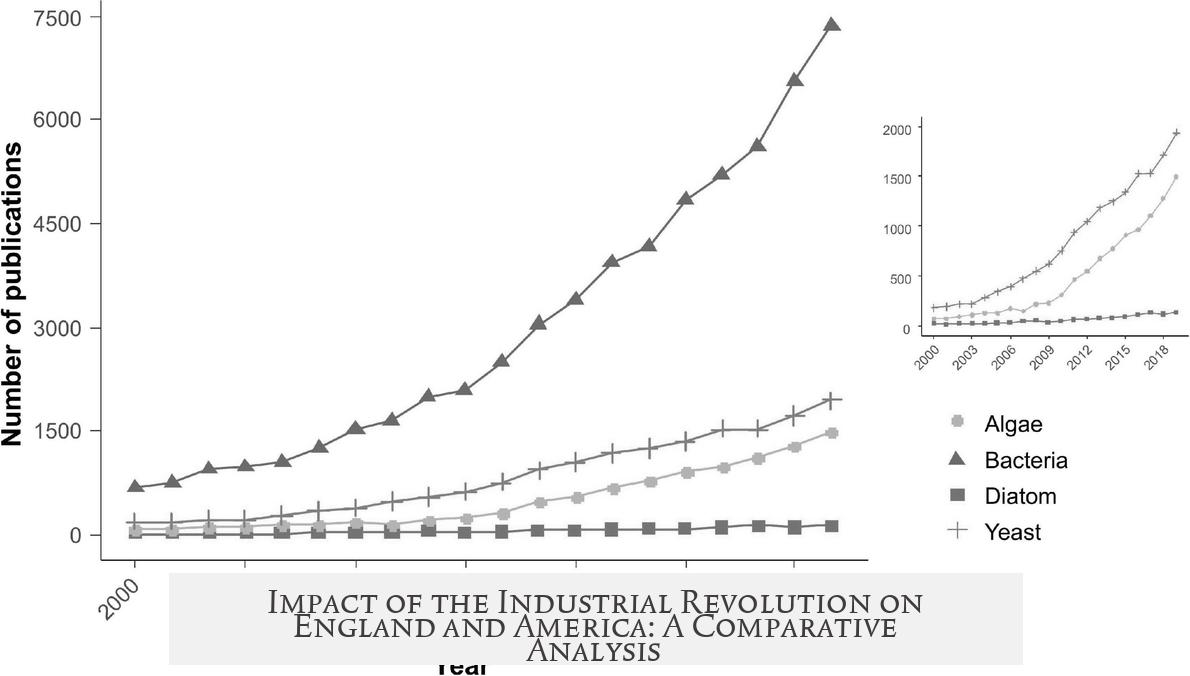The Industrial Revolution significantly impacted England and America, but the timing, intensity, social effects, and environmental consequences varied between the two. England experienced the revolution earlier and more gradually, with profound urban and social transformations centered around its manufacturing hubs. America adopted industrialization later but saw a more rapid and intense shift, paralleling advancements like electrification. The consequences on pollution, labor structures, and class divides also differed markedly.
England’s Industrial Revolution began in the late 18th century, catalyzed by its dense population, available coal resources, and established transport networks. Cities like Manchester and Sheffield evolved into industrial centers, with factories employing adults and many children in grueling conditions. The working day stretched from early morning to late evening, and wages remained below subsistence, promoting worker dependency. This factory system replaced skilled artisanal labor with mechanized processes, displacing many workers and reducing the importance of traditional skills. Consequently, England developed a sharper class divide as factory owners amassed wealth, forming a rising middle class distinct from the working population.
Industrialization in England transformed the environment, especially in the Midlands. The “Black Country,” for example, became an industrial wasteland littered with coal cinders, iron furnaces, and persistent smoke. The landscape was heavily scarred, echoing the shift from pastoral villages to harsh industrial zones. Pollution was severe enough to draw social condemnation; even Queen Victoria reportedly drew her curtains as her train passed through these areas. Smoke and soot blackened buildings and contributed to urban heat, making living conditions difficult.
In contrast, America’s industrialization started later but advanced rapidly. The Civil War coincided with steam-powered industrial growth, which shortly gave way to electrification and internal combustion technologies. This allowed the U.S. to leapfrog some earlier industrial phases seen in England, intensifying production over a shorter time. Although labor conditions were tough, they generally did not reach the extreme hardship and widespread poor living conditions that persisted in England’s northern cities. American industrial cities like Chicago developed large slaughter industries that heavily polluted waterways, often dumping waste directly into rivers until government regulations intervened.
Pollution during the steam revolution derived largely from population density rather than just industrial activities. England’s crowded cities faced significant waste management challenges but developed sewer systems earlier than U.S. cities. This early innovation helped England better control industrial waste and human refuse. U.S. cities lagged in this regard, with massive pollution from slaughterhouses and less regulated urban waste disposal affecting water quality more visibly in areas like Chicago.
Labor dynamics also showed important differences. England’s pre-industrial manufacturing segmented production into distinct phases handled by different workers or contractors. With mechanization, many specialized skills became obsolete. Factories employed unskilled laborers, including many children, working long hours under harsh conditions. Such widespread exploitation contributed to lower life expectancy in industrial areas, often below 40 years in places like Manchester.
- The American labor force adopted industrial jobs faster but often benefited from somewhat better conditions.
- Wages and working hours were less severe, and widespread slum conditions like those in England’s northern cities were less common in the U.S.
- Social mobility was somewhat easier as industry and technology evolved quickly, creating varied job opportunities.
The Industrial Revolution in England widened the social gap between the emerging middle class of factory owners and the working class reduced to monotonous factory roles. Meanwhile, America’s industrial growth also reinforced class distinctions but with a slightly less rigid divide. Rapid technological change in the U.S. often allowed workers to move into new roles as industries switched to electrification and combustion engines.
| Aspect | England | America |
|---|---|---|
| Timing | Early, gradual, late 18th to 19th century | Later start, rapid post-Civil War acceleration |
| Pollution | Severe air and water pollution; earlier sewer systems | Less air pollution initially; major water pollution issues from slaughterhouses |
| Labor | Long hours, harsh child labor, skill displacement | Harsh but generally less severe conditions |
| Urbanization | Industrial cities became slums with soot and heat | Growth during electrification era; slums less extensive |
| Environmental Impact | Black Country devastation, heavily scarred landscape | Less immediate landscape destruction; pollution localized |
In summary, England’s Industrial Revolution began earlier and brought prolonged, intense urban transformation marked by severe pollution and harsh labor conditions. The social structure changed as factory owners gained wealth, widening the class gap. America’s industrialization developed later but occurred more rapidly, benefiting from advances like electrification and combustion engines. This allowed for somewhat improved labor conditions and less pervasive urban pollution initially. Waste management also advanced earlier in England due to population pressures, contrasting with the more delayed American response to industrial and urban waste.
- England industrialized earlier with a slower but enduring transformation.
- Pollution in England was more severe and visible due to dense urban populations.
- American industrial growth was rapid and technologically advanced post-Civil War.
- Working conditions in England were harsher, with longer hours and more child labor.
- Environmental devastation transformed English industrial regions like the Midlands.
- America faced pollution issues, especially in water, but urban slums were less extreme.
1. How did the timing of the Industrial Revolution differ between England and America?
The Industrial Revolution started earlier in England due to higher population density. In the US, it took place later but progressed more rapidly with quick shifts to electrification and combustion technologies.
2. What were the main pollution challenges during the Industrial Revolution in England compared to America?
England faced serious pollution from human and animal waste affecting water supply due to dense populations. American cities struggled more with industrial waste, like Chicago’s slaughterhouse blood dumping into rivers.
3. How did labor and class structures change differently in England and the US during this period?
In England, machinery replaced skilled labor causing sharp class divisions and poor working conditions. In the US, harsh conditions existed but were less widespread, and living standards did not decline as drastically.
4. What was the environmental impact of industrialization in England’s Midlands?
The Midlands changed from rural villages into heavily polluted industrial zones called the “Black Country,” covered with cinders, glowing furnaces, and constant smoke, drastically altering the landscape and air quality.
5. How did urban waste management evolve differently in England versus America during industrialization?
English cities developed sewer systems earlier due to population pressure, which helped control waste better. American cities like Chicago lagged behind, allowing slaughterhouse waste to contaminate rivers until government intervention.




